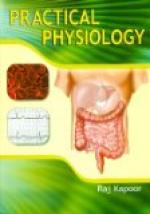Scurvy. Scorbutus,—a disease of the general system, having prominent skin symptoms.
Sebaceous (Lat. sebum, fat). Resembling fat; the name of the oily secretion by which the skin is kept flexible and soft.
Secretion (Lat. secerno, secretum, to separate). The process of separating from the blood some essential, important fluid; which fluid is also called a secretion.
Semicircular Canals. Three canals in the internal ear.
Sensation. The perception of an external impression by the nervous system.
Serum. The clear, watery fluid which separates from the clot of the blood.
Spasm (Gr. spasmos, convulsion). A sudden, violent, and involuntary contraction of one or more muscles.
Special Sense. A sense by which we receive particular sensations, such as those of sight, hearing, taste, and smell.
Sputum, pi. Sputa (Lat. spuo, sputum, to spit). The matter which is coughed up from the air passages.
Stapes. Literally, a stirrup; one of the small bones of the middle ear.
Stimulant (Lat. stimulo, to prick or goad on). An agent which causes an increase of vital activity in the body or in any of its parts.
Striated (Lat. strio, to furnish with channels). Marked with fine lines.
Styptics (Gr. stuptikos astringent). Substances used to produce a contraction or shrinking of living tissues.
Subclavian Vein (Lat. sub, under, and clavis, a key). The great vein bringing back the blood from the arm and side of the head; so called because it is situated underneath the clavicle, or collar bone.
Superior Vena Cava (Lat., upper hollow vein). The great vein of the upper part of the body.
Suture (Lat. sutura, a seam). The union of certain bones of the skull by the interlocking of jagged edges.
Sympathetic System of Nerves. A double chain of nervous ganglia, situated chiefly in front of, and on each side of, the spinal column.
Symptom (Gr. syn, with, and pipto, to fall). A sign or token of disease.
Synovial (Gr. syn, with, and oon, an egg). The liquid which lubricates the joints; joint-oil. It resembles the white of a raw egg.
System. A number of different organs, of similar structures, distributed throughout the body and performing similar functions.
Systemic. Belonging to the system, or body, as a whole.
Systole (Gr. sustello, to contract). The contraction of the heart, by which the blood is expelled from that organ.
Tactile (Lat. tactus, touch). Relating to the sense of touch.
Tartar. A hard crust which forms on the teeth, and is composed of salivary mucus, animal matter, and a compound of lime.
Temporal (Lat. tempus, time, and tempora, the temples). Pertaining to the temples; so called because the hair begins to turn white with age in that portion of the scalp.




